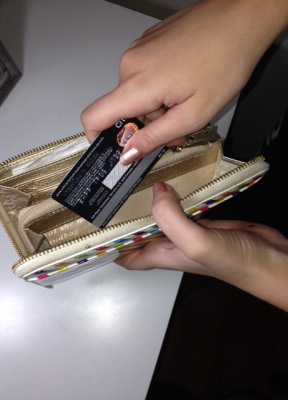
SMU sophomore Emily Bloch never intended to spend New Year’s Day at the bank.
But after a night of celebration, she woke up in 2014 to learn that someone had stolen her debit card information and used it on a shopping spree across the country.
Although her physical debit card was not stolen, Bloch said orders were made online and over the phone.
“My debit card number and pin were stolen and charged to between four to five random places right after New Years,” she said.
According to a study in 2012 by the Federal Trade Commission, 18-19 year olds are more likely to experience identity theft then any other age group in America.
SMU’s director of technology, David Sedman believes that college-aged students are major bull’s-eye for credit card theft. Most students have not bought their own house or car, which means their credit records are mostly blank and easier to be used to secure new credit.
“Thieves use students as a target audience for this type of crime because most students do not realize how vulnerable they truly are,” said Sedman.
But students should not feel like they are alone in this predicament. As reported by the FTC, over 40 million Americans had their credit and debit card information stolen in 2013. Identity theft cost Americans $10 billion more than any other property crimes as measured by the National Crime Victimization Survey.
Dallas-based Neiman Marcus, which caters to upper-income shoppers, revealed that in 2013, 1.1 million credit and debit cards were compromised due to a breach in their system.
Tyler Moore, SMU’s assistant professor of computer science admits that there is very little that a consumer can do to prevent this form of theft from happening.
Along with many Americans, Moore wonders why technologically America is behind other countries who have adopted a chip and pin-based card called EMV: Europay, MasterCard, Visa.
Wells Fargo financial advisor, Peter Thompson believes that an EMV chip creates safer transactions for the account holders.
“Whenever my clients go abroad, I always advise them to get an EMV chip, just to make things safer and more secure,” said Thompson.
Thompson is convinced that this type of chip-and-pin upgrade would help lower America’s credit and debit card theft problem by reducing the probability of this crime.
Some people are perplexed why this upgrade has not happened sooner, but according to EMVCo, within five years, all cards in the United States will have a chip.
Unfortunately, having to wait five years for this chip to be installed can be detrimental for your cards and there is a high probability that your information will be stolen between then and now.
Here are a few simple ways to help reduce credit and debit card theft that will not take up a lot of your time or money.
– Keep your cards safe from prying eyes.
Carry your credit and debit cards separately from your wallet. This can help minimize your losses if someone happens to steal your purse or wallet.
Before you leave the house, grab only the one or two credit cards that you will be using and leave the rest of your cards in a secure place at home.
Do not leave your credit or debit cards exposed any longer than necessary. You never know when thieves are on the lookout to take a picture of your information. SMU senior Hailey Dunn was blind-sided after her credit card information was stolen from someone at gas station pump. Dunn says to help prevent this from happening again, she only gets her gas at places that have attendants watching to ensure no one steals her information.
Always confirm that you have your credit or debit card in your possession before you leave a store or restaurant.
– Be cautious when using your cards online.
Only shop where you know the company is a reputable online merchant. Before you enter your information, make sure the company is using a secure website by looking for a lock in the lower right corner of your Internet browser.
Avoid email surveys that ask for a lot of information and do not click on email links from anyone who does not look legitimate. These links are often phishing scams wanting to trick you with their fake website.
– Check your bills frequently.
Make sure to view your bank and credit or debit card accounts as often as you can. Sign up for emails or text messages connected to your accounts that alert you of suspicious activity.
Unauthorized charges on your card are the first indication that you are a victim of credit card theft. No matter how small the charge, if you notice anything out of the ordinary, report the charge to your card’s issuer immediately.
Even though these changes seem small and tedious, it is better to be safe than become a victim of credit card theft.
Despite the fact that Professor Sedman sees credit card theft as a current issue for the United States, he is confident that the future will bring change.
“In five years we will look back at this period as an awkward stage for preventing credit card theft,” he said. “Hopefully by then, we will have this unfortunate situation figured out.”
Alexandria Bauer is a Junior Journalism major and English minor. You can contact her via email (abauer@smu.edu) or tweet her @ajkbauer.








